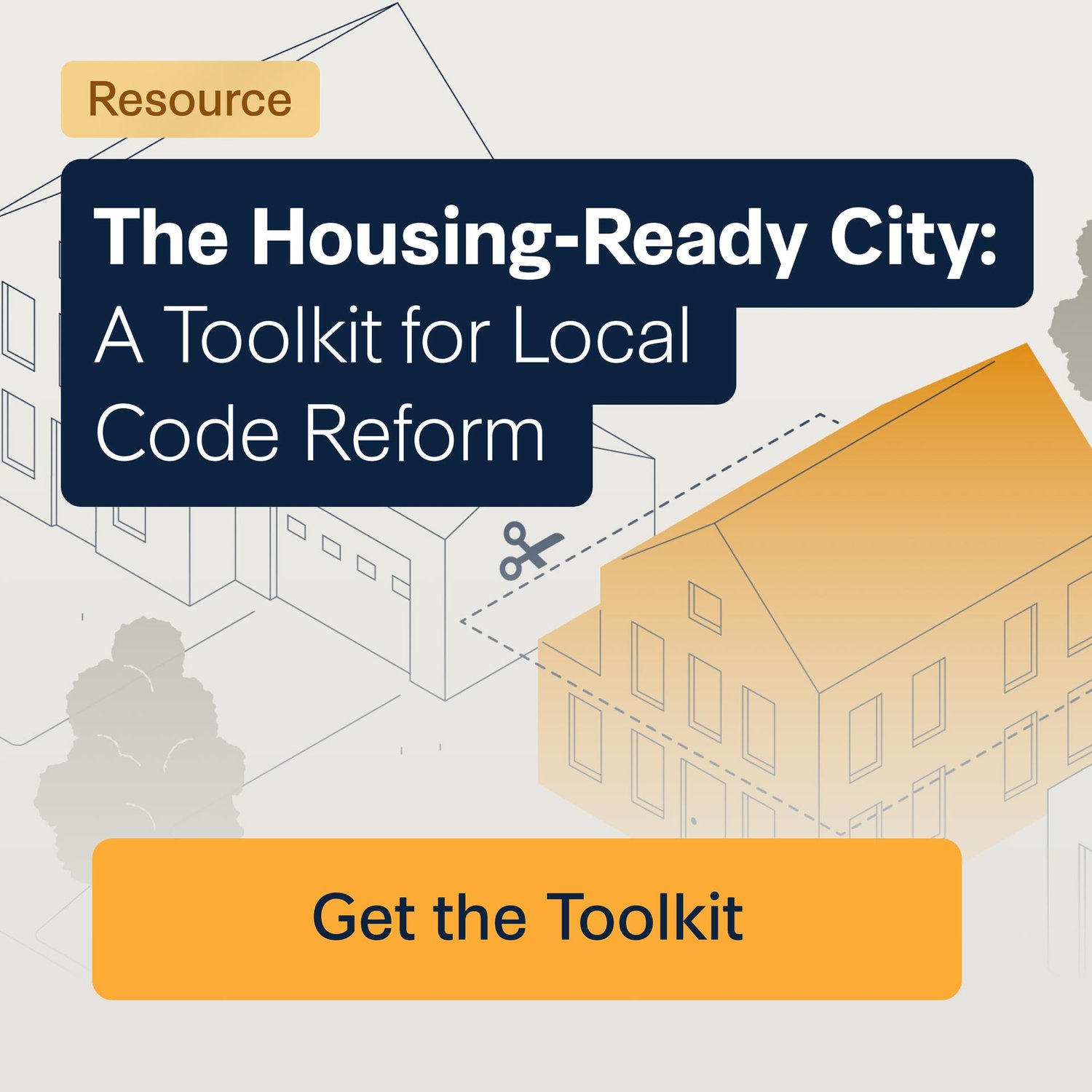Washington Just Rewrote the Rules on Parking — Here’s Why It Worked
Washington state Governor Ferguson at a bill signing ceremony for the 2025 Parking Reform and Modernization Act. Image from Sightline Institute.
What if parking rules weren’t just a zoning footnote, but a roadblock to building homes, businesses, and essential services? That question helped Washington State pass a landmark parking reform law this spring—by changing not just the rules, but the narrative.
For years, mandatory parking minimums have quietly driven up the cost of living. These rules have required developers to build a fixed number of off-street parking spaces, regardless of whether people actually need them. The result? Higher construction costs, fewer homes and businesses, and city landscapes shaped more by parking lots than by human needs.
As of May 2025, Washington’s Parking Reform and Modernization Act (SB 5184) sets clear limits on how much parking local governments can require in new developments. In most cases, it shifts the decision-making power away from blanket local quotas and back to property owners, allowing them to determine how much parking makes sense for the homes or businesses they want to build.
Unlike earlier reforms focused only on areas near transit, SB 5184 applies community-wide. One of its most consequential provisions is a full exemption for homes under 1,200 square feet—a category that includes most apartments and a large share of accessory dwelling units and middle housing. Given that the average new U.S. apartment is just 904 square feet (and even the typical two-bedroom comes in at 1,097), this means most new housing across Washington will be free from mandatory parking requirements.
The law also breaks new ground by addressing commercial uses, not just residential ones. It exempts small commercial spaces under 3,000 square feet, as well as storefronts located on the ground floor of mixed-use buildings. Additional exemptions apply to childcare centers, subsidized affordable housing, senior housing, and existing buildings changing use—all of which now have the flexibility to build only the parking they actually need.
As the Sightline Institute—one of the groups behind the bill’s coalition—notes, SB 5184 now ranks among the most far-reaching statewide rollbacks of parking mandates in the U.S.
Winning the Argument by Changing the Argument
But the real story is in how advocates got this over the finish line.
Previous efforts in Washington, like similar laws passed in Oregon and California, focused on lifting parking mandates near transit. It made sense on paper: if you live near a train or frequent bus line, you might not need a car—or a parking space. But in practice, this approach backfired. Legislators got bogged down in debates over whether transit service was “good enough,” or if people might still need to drive sometimes. Instead of moving forward, the debate got stuck in geographic technicalities and transit wonkery.
So, its sponsors tried something different. The new bill flipped the framing—from “where” should mandates apply, to “when” do they actually make sense. Instead of drawing circles around train stops, lawmakers asked a simpler question: Should outdated parking rules stop a daycare from opening? Should they make affordable housing too expensive to build?
That shift in language—and focus—proved powerful. It resonated with groups across the spectrum: housing advocates, small business owners, real estate professionals, and even unions. And it helped build the broad coalition needed to pass the bill with strong bipartisan support.
It Begins With Local Momentum
Perched over the Columbia River Gorge, the city of White Salmon, Washington has been inching towards this thinking for years—and earned its place on Strong Towns’ Housing-Ready Cities Map because of it.
While the city of less than 3,000 hasn’t yet passed a full repeal of its parking minimums, local officials have been actively discussing how to “right-size” parking requirements to reflect actual needs—not blanket assumptions. In a 2024 presentation, urban designer and educator, Michael Mehaffy illustrated how the current mandates effectively ban certain kinds of small-scale development and constrain property owners’ flexibility. “...The changes do not limit what private owners decide to provide,” he underscored. “They merely limit what the government can mandate.”
Washington’s statewide reform now gives cities like White Salmon more room to maneuver. By establishing a broad baseline against excessive mandates, the state has shifted the burden of justification: it’s no longer on the builder to prove they don’t need parking—it’s on policymakers to explain why a mandate is still necessary.
What Comes Next
Washington’s new law doesn’t ban parking. Developers and homeowners are still free to include as much of it as they want. What it does change is who gets to decide. Instead of one-size-fits-all rules handed down by local codes, parking decisions can now be made based on what actually makes sense for a project, a business, or a neighborhood.
And while this law sets a statewide floor—preventing cities from imposing excessive mandates—it still leaves room for local governments to shape how reform gets implemented. Cities will need to update their zoning codes, revise development processes, and have the kinds of community conversations that can lead to better, more people-centered design. For many places, this is a huge opportunity to think differently about how neighborhoods work—not around car storage, but around homes, small businesses, kids walking to school, and seniors getting to the grocery store.
Other states are already watching. For communities struggling with housing shortages, inflated development costs, or underused land, Washington’s approach offers a clear example of what’s possible—not just in policy, but in political strategy, too.
And if your city is ready to do something similar, repealing parking mandates is a great place to start.
At Strong Towns, we call that one of the key items on the Housing-Ready Checklist—a set of six practical steps any community can take to legalize more housing and bring down the barriers that make good development harder than it needs to be.
Parking reform isn’t just a technical fix. It’s a signal that your city is ready to put people ahead of outdated assumptions—and to give property owners, renters, and local businesses more freedom to build the future they actually want.






